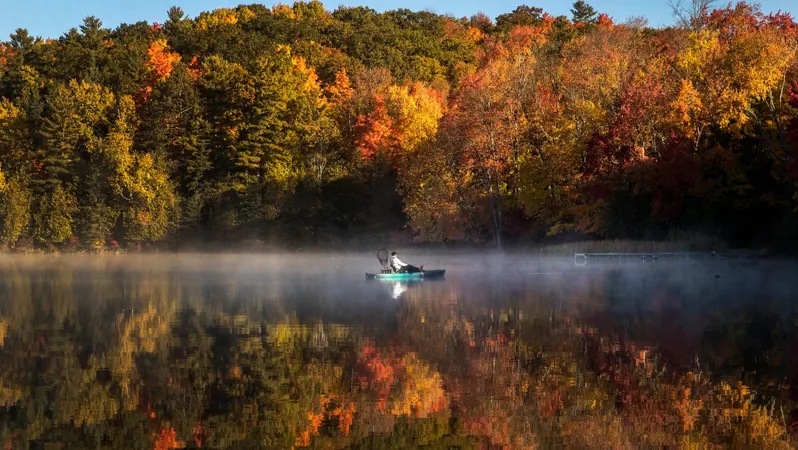
Ontario's Dull Fall Colors: Is Climate Change to Blame?
2024-10-14
Author: Benjamin
Ontario's Dull Fall Colors: Is Climate Change to Blame?
This autumn, Ontario is seeing a warmer than usual season, which is leading to less vibrant fall foliage than in previous years. Typically at this time, the province would be graced with a stunning array of yellows, oranges, and deep reds, transforming the landscape into a picturesque scene. However, this year’s warmer temperatures have caused concern among experts who believe this trend may have dire long-term implications.
Many regions, especially the Greater Toronto Area, experienced notably higher temperatures throughout September. According to Susan Dudley, a biology professor at McMaster University in Hamilton, the conditions for bright fall colors hinge on a delicate balance of sunny yet cooler weather. She states, "The weather that really promotes bright fall colours is a combination of sunny and cold, and we have been more sunny and warm." Unfortunately, as the warm spell has lingered, the physiological processes that trees undergo to change color may have already been compromised.
Experts highlight three critical factors that influence autumnal leaf coloration: daylength, tree species, and weather conditions. Ontario's unique climate often benefits from these elements, yielding a rich tapestry of colorful foliage thanks to its diverse array of trees, particularly the beloved maple. However, the unpredictable weather of this year has altered expectations.
The production of pigments within leaves—crucial for color display—is governed by three chemicals. Chlorophyll, which gives leaves their green hue during the growing season, begins to break down, revealing carotenoids that produce yellow shades. Anthocyanins, the pigments responsible for reds and purples, form when sugar levels in the leaves rise due to environmental conditions.
Forest ecology expert Sean Thomas from the University of Toronto emphasizes the need for temperature dips near freezing—without frost—and bright sunlight to create vibrant colors. "We've had pretty summery temperatures until the last week or so," he explains, noting that the consistent warmth does not allow for the cooler temperatures needed for a dazzling display.
Interestingly, regions located farther north of the Greater Toronto Area are experiencing better color displays due to cooler weather. However, experts warn that climate change is likely to bring about longer stretches of warm weather, increased precipitation, and cloud cover during fall, which could lead to increasingly muted foliage. Thomas warns, "This year really captured those changes, especially the higher precipitation inputs, and that in general is not a good long-term forecast for vibrant fall colors."
Despite the challenges posed by this year's weather, Ontarians still may witness some stunning colors before winter blankets the region in snow. Cold snaps in recent weeks offer a glimmer of hope, potentially allowing certain tree species to display their colors before the fall ends. "We will see something, but likely not what we saw last year,” Thomas predicts.
As climate patterns shift, the future of Ontario's iconic fall colors hangs in the balance. Will this be the new norm for autumn in Ontario? Only time—and the weather—will tell.









 Brasil (PT)
Brasil (PT)
 Canada (EN)
Canada (EN)
 Chile (ES)
Chile (ES)
 España (ES)
España (ES)
 France (FR)
France (FR)
 Hong Kong (EN)
Hong Kong (EN)
 Italia (IT)
Italia (IT)
 日本 (JA)
日本 (JA)
 Magyarország (HU)
Magyarország (HU)
 Norge (NO)
Norge (NO)
 Polska (PL)
Polska (PL)
 Schweiz (DE)
Schweiz (DE)
 Singapore (EN)
Singapore (EN)
 Sverige (SV)
Sverige (SV)
 Suomi (FI)
Suomi (FI)
 Türkiye (TR)
Türkiye (TR)